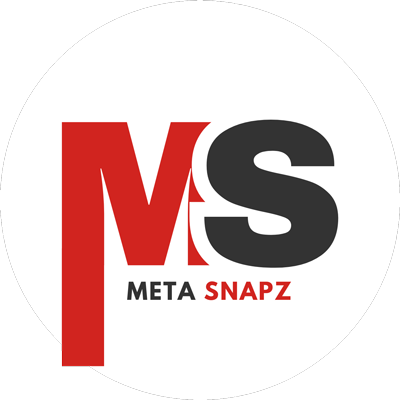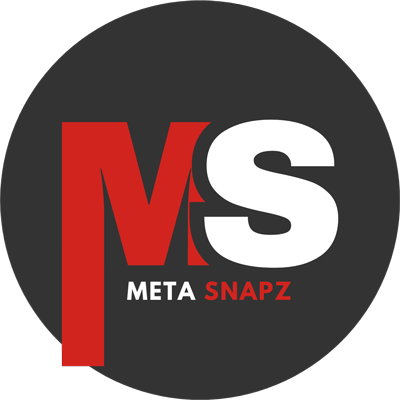In today’s rapidly evolving business landscape, the concept of PLG supplies has emerged as a critical component of operational excellence. Standing for Product-Led Growth Supplies, this comprehensive approach to procurement goes far beyond traditional inventory management, representing a strategic framework that integrates quality materials, innovative tools, and digital solutions to drive business success.
While many organizations still view supplies as mere operational necessities, forward-thinking companies recognize PLG supplies as strategic assets that directly impact productivity, safety, compliance, and competitive advantage. This paradigm shift is reshaping how businesses approach procurement, transforming it from a cost center into a value creation engine.
Understanding the PLG Supplies Revolution
The term “PLG supplies” encompasses a sophisticated ecosystem of products and services designed to support modern business operations across multiple dimensions. Unlike traditional supply chains that focus primarily on cost minimization, PLG supplies prioritize value optimization through strategic selection, quality assurance, and integrated digital capabilities.
The Three Pillars of PLG Supplies
1. Product Excellence: Every item in a PLG supplies portfolio undergoes rigorous quality assessment to ensure it meets or exceeds industry standards. This includes everything from basic consumables to complex industrial equipment.
2. Led Innovation: PLG suppliers leverage cutting-edge technology and data analytics to optimize inventory management, predict demand, and streamline delivery processes.
3. Growth Enablement: Rather than simply fulfilling orders, PLG supplies providers act as strategic partners, offering consultation, training, and ongoing support to drive business growth.
Comprehensive Product Categories in PLG Supplies
The diversity of PLG supplies reflects the complex needs of modern businesses. Understanding these categories helps organizations make informed procurement decisions that align with their operational goals and strategic objectives.
| Category | Key Products | Primary Industries | Strategic Impact |
|---|---|---|---|
| Industrial Equipment | Power tools, machinery, hydraulic systems | Manufacturing, Construction | Productivity enhancement |
| Safety & PPE | Protective gear, compliance equipment | Healthcare, Chemical, Mining | Risk mitigation, regulatory compliance |
| MRO Supplies | Maintenance tools, repair components | Utilities, Transportation | Asset longevity, uptime optimization |
| Digital Integration | Analytics software, IoT sensors | Technology, Logistics | Data-driven decision making |
Emerging Categories in PLG Supplies
As businesses evolve, new categories of PLG supplies are gaining prominence:
- Sustainability Solutions: Eco-friendly materials, energy-efficient equipment, and recyclable packaging options
- Digital Enablement Tools: Software platforms, automation systems, and AI-powered analytics
- Compliance Management: Regulatory tracking systems, audit tools, and certification support
- Workplace Wellness: Ergonomic equipment, air quality systems, and health monitoring devices
Strategic Benefits of Implementing PLG Supplies
Organizations that embrace PLG supplies experience measurable improvements across multiple key performance indicators. These benefits extend far beyond simple cost savings, creating value that compounds over time.
Operational Excellence Improvements
Enhanced Productivity: Quality tools and equipment reduce task completion times by an average of 15-25%, according to industry studies. For example, upgrading from standard hand tools to precision power tools can cut assembly times significantly while improving accuracy.
Reduced Downtime: Strategic maintenance supply procurement can decrease equipment downtime by up to 30%. Companies implementing predictive maintenance programs supported by PLG supplies report substantial improvements in asset availability.
Safety Performance: Comprehensive safety supply programs typically result in 40-60% reductions in workplace incidents, directly impacting insurance costs and regulatory compliance.
Financial Impact Analysis
The financial benefits of PLG supplies implementation often exceed initial investment costs within 12-18 months:
- Direct Cost Savings: Bulk purchasing and strategic supplier partnerships reduce per-unit costs by 10-20%
- Indirect Savings: Reduced maintenance frequency, lower replacement rates, and decreased emergency purchasing
- Revenue Protection: Minimized downtime and improved quality standards protect revenue streams
- Risk Mitigation: Compliance adherence and safety improvements reduce potential liability costs
Industry-Specific PLG Supplies Applications
Different industries require tailored approaches to PLG supplies implementation, with specific focus areas that align with sector characteristics and regulatory requirements.
Manufacturing Sector Implementation
Manufacturing organizations benefit from PLG supplies through:
- Production Line Optimization: High-precision tools and automated systems that maintain quality standards
- Preventive Maintenance: Scheduled component replacement programs that prevent costly breakdowns
- Quality Assurance: Testing equipment and measurement tools that ensure product consistency
A leading automotive manufacturer reported 22% improvement in overall equipment effectiveness (OEE) after implementing a comprehensive PLG supplies program focused on precision tooling and predictive maintenance components.
Healthcare Industry Applications
Healthcare facilities require specialized PLG supplies that meet stringent regulatory standards:
- Patient Safety Equipment: Medical-grade supplies that prevent infections and ensure treatment efficacy
- Facility Maintenance: Specialized cleaning products and HVAC components that maintain sterile environments
- Compliance Documentation: Digital tracking systems that maintain regulatory audit trails
Digital Transformation in PLG Supplies
The integration of digital technologies represents the most significant evolution in PLG supplies management. These innovations are transforming traditional procurement into intelligent, data-driven operations.
Analytics and Predictive Intelligence
Modern PLG supplies platforms leverage artificial intelligence to:
- Demand Forecasting: Predict supply needs based on historical data, seasonal patterns, and business growth projections
- Inventory Optimization: Maintain optimal stock levels while minimizing carrying costs and stockout risks
- Supplier Performance: Monitor and evaluate supplier reliability, quality, and cost-effectiveness
IoT Integration and Smart Monitoring
Internet of Things (IoT) sensors embedded in equipment and inventory systems provide real-time visibility into:
- Usage Patterns: Understanding how supplies are consumed across different departments and time periods
- Condition Monitoring: Tracking equipment health to schedule maintenance before failures occur
- Environmental Factors: Monitoring storage conditions to maintain product quality and shelf life
Sustainability and Environmental Responsibility
Environmental considerations are becoming increasingly important in PLG supplies selection. Organizations are recognizing that sustainable practices not only reduce environmental impact but also create long-term cost savings and enhance brand reputation.
Sustainable Product Selection
Modern PLG supplies programs incorporate sustainability through:
- Material Sourcing: Prioritizing recycled, renewable, and responsibly sourced materials
- Energy Efficiency: Selecting equipment and tools that minimize energy consumption
- Lifecycle Assessment: Evaluating total environmental impact from production to disposal
- Packaging Optimization: Reducing waste through efficient packaging design and reusable containers
Circular Economy Integration
Progressive organizations are implementing circular economy principles in their PLG supplies strategies:
- Refurbishment Programs: Extending equipment life through professional refurbishment services
- Take-Back Initiatives: Supplier programs that recycle or repurpose used equipment
- Sharing Economy: Equipment rental and sharing programs that maximize utilization
Implementation Strategy for PLG Supplies
Successful PLG supplies implementation requires a structured approach that considers organizational needs, existing systems, and long-term objectives.
Phase 1: Assessment and Planning
Begin with comprehensive analysis of current supply chain performance:
- Spend Analysis: Categorize and evaluate current purchasing patterns
- Supplier Assessment: Review existing supplier relationships and performance metrics
- Gap Analysis: Identify areas where current supplies don’t meet operational needs
- Stakeholder Engagement: Involve key departments in defining requirements and success criteria
Phase 2: Strategic Partner Selection
Choose PLG supplies partners based on comprehensive evaluation criteria:
- Product Portfolio: Breadth and depth of available products and services
- Technology Capabilities: Digital platforms and integration possibilities
- Service Level: Response times, technical support, and consultation services
- Financial Stability: Long-term viability and competitive pricing structures
Measuring Success and ROI
Establishing clear metrics and measurement systems is essential for demonstrating the value of PLG supplies investments and identifying opportunities for continuous improvement.
Key Performance Indicators
Track these essential metrics to measure PLG supplies program effectiveness:
- Cost Per Unit: Total cost of ownership including acquisition, maintenance, and disposal
- Supply Chain Reliability: On-time delivery rates and stockout frequency
- Quality Metrics: Defect rates, return frequency, and user satisfaction scores
- Safety Performance: Incident rates and compliance audit results
- Environmental Impact: Carbon footprint reduction and waste minimization
Future Trends in PLG Supplies
The PLG supplies landscape continues evolving, driven by technological advancement, changing business needs, and environmental concerns. Organizations that stay ahead of these trends will maintain competitive advantages.
Emerging Technologies
Key technological developments shaping the future include:
- Artificial Intelligence: Advanced predictive analytics and automated decision-making
- Blockchain: Supply chain transparency and authenticity verification
- Augmented Reality: Enhanced training and maintenance support
- 3D Printing: On-demand production of specialized components
For more information about supply chain innovation trends, visit the Supply Chain Brain industry resource.
Conclusion: The Strategic Imperative
PLG supplies represent far more than a procurement strategy—they constitute a fundamental approach to business operations that prioritizes value creation, operational excellence, and sustainable growth. Organizations that embrace this comprehensive framework position themselves for success in an increasingly competitive marketplace.
The evidence is clear: companies implementing strategic PLG supplies programs experience measurable improvements in productivity, safety, cost efficiency, and environmental performance. As business complexity continues to increase, the importance of having reliable, high-quality supplies supported by innovative technology and expert consultation becomes even more critical.
Success in PLG supplies implementation requires commitment from leadership, engagement from stakeholders across the organization, and partnerships with suppliers who understand the strategic nature of their role. By viewing supplies as strategic assets rather than operational necessities, organizations can unlock significant value and build sustainable competitive advantages.
The future belongs to organizations that recognize PLG supplies as a strategic foundation for operational excellence. Those who act decisively to implement comprehensive PLG supplies programs will be best positioned to thrive in the dynamic business environment ahead.


